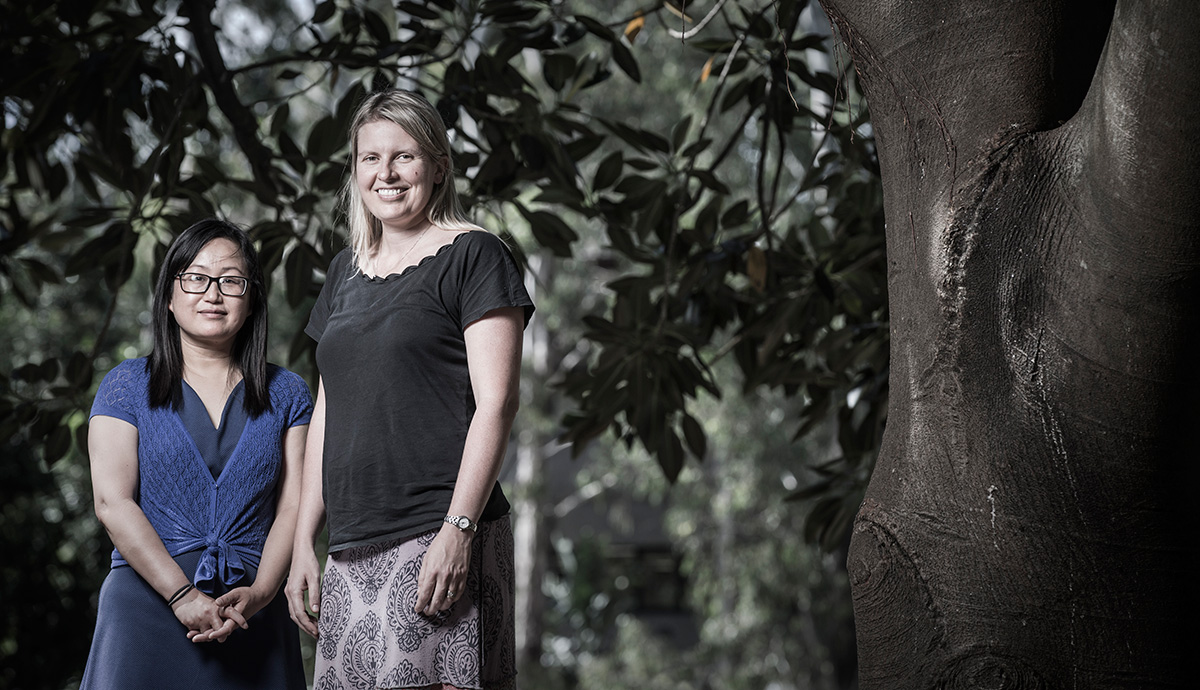December 16, 2015
Emerging research stars receive $2.6M in competitive national funding
Fellowships to develop high-power sodium-ion batteries and decrypt the history of human evolution.
Three up-and-coming research stars have been granted hotly contested fellowships to develop high power sodium-ion batteries and decrypt the history of human evolution.
The three Future Fellowships to be undertaken at UOW were awarded in the latest round of Australian Research Council (ARC) funding announced in Brisbane today.
Deputy Vice-Chancellor (Research and Innovation) Professor Judy Raper said UOW would receive $2.6million over four years under the highly competitive scheme for mid-career researchers.
“This is an outstanding result and a testament to the quality of mid-career researchers coming up through the ranks at UOW.”
She said the results highlighted UOW’s strengths in materials engineering and archaeology, both of which were rated ‘well above world standard’ in the recent Australian Research Council’s 2015 Excellence in Research for Australia (ERA) report.
UOW’s Centre for Archaeological Science (CAS) has over the last decade played a key role in the development and application of single-grain optically stimulated luminescence dating of key turning points in the evolution and behaviour of our own species—Homo sapiens— and also other human species, such as the “Hobbit” of Flores and Neanderthals in Europe.
Dr Zenobia Jacobs (pictured above, right), Head of UOW’s School of Earth & Environmental Sciences and researcher with CAS, has been awarded a Future Fellowship of more than $946,000, the largest awarded in 2015, to continue her research into the evolution of early humans.
Her project will address the critical question of when Homo sapiens, Neanderthals and Denisovans occupied the Altai region of Russia, the only place on Earth where these three groups of humans are known to have existed at the same time.
Dr Jacobs said when the recovery of ancient DNA from the fossilised finger bone of an unknown lineage of ancient species (dubbed the ‘Denisovans’ after the cave in which they were found) was recovered from Siberia in 2010, the story of human evolution and world prehistory “took an unexpected turn”.
“Many mysteries about the Denisovans remain. We still don’t know when they lived, how geographically widespread they were, when they went extinct, and why.”
The mystery of the Denisovans deepened further when it was discovered that, of all humans alive today, Aboriginal Australians and Melanesians contain by far the greatest amount of Denisovan DNA in their genomes—up to 5 per cent—surprisingly linking these enigmatic hominins found in Siberia with the first Australians.
Using optical dating, Dr Jacobs will construct an accurate timescale for the archaeological and human fossil assemblages found in the Altai region of Russia over the past 800,000 years in the hope of answering some of these key questions about human evolution.
“This project will yield new insights into human evolution and how Homo sapiens came to be.
“It will also place Australia’s cultural heritage within the broader framework of global human history, and enrich our understanding and appreciation of Aboriginal culture,” she said.
Professor Zaiping Guo (pictured above, left), from UOW’s School of Mechanical, Materials, and Mechatronic Engineering and the Institute for Superconducting and Electronic Materials (ISEM), which is part of the Australian Institute for Innovative Materials (AIIM) has been awarded a $899,000 Future Fellowship to explore new materials for ultra-efficient, long-life sodium-ion batteries.
ISEM is a world-leader in superconducting and electronic materials science and technology. Its researchers are working on technologies to support electric vehicles, next generation electronics and new materials for advanced energy storage.
Professor Guo and her team have been working to create sodium ion batteries and will now focus on developing new nanoscale electrode materials to use in the batteries.
Professor Guo said sodium is one of the Earth’s most abundant elements and hence sodium batteries will be incredibly cheap to make.
“Sodium-ion batteries are the most promising choice for large-scale electrical energy storage, in particular for renewable energy sources and smart electric grids, owing to their low cost and the natural abundance of sodium.”
“The success of this project will advance fundamental understanding of sodium-ion batteries, and provide techniques for the development of a promising low-cost system for renewable energy storage, which is urgently needed in smart electricity grids.”
Professor Yusuke Yamauchi, currently at Japan’s National Institute of Materials Science, will travel to UOW to undertake his Future Fellowship.
Professor Yamauchi will join the team at ISEM and AIIM to work on a $784,000 project aimed at creating novel high-performance, low-cost, and long-life electrode catalysts, which is important for improving energy conversion technology.
It is hoped the insights gained from this project can be utilised to advance fuel cells and advance other green energy technologies under development at ISEM.
